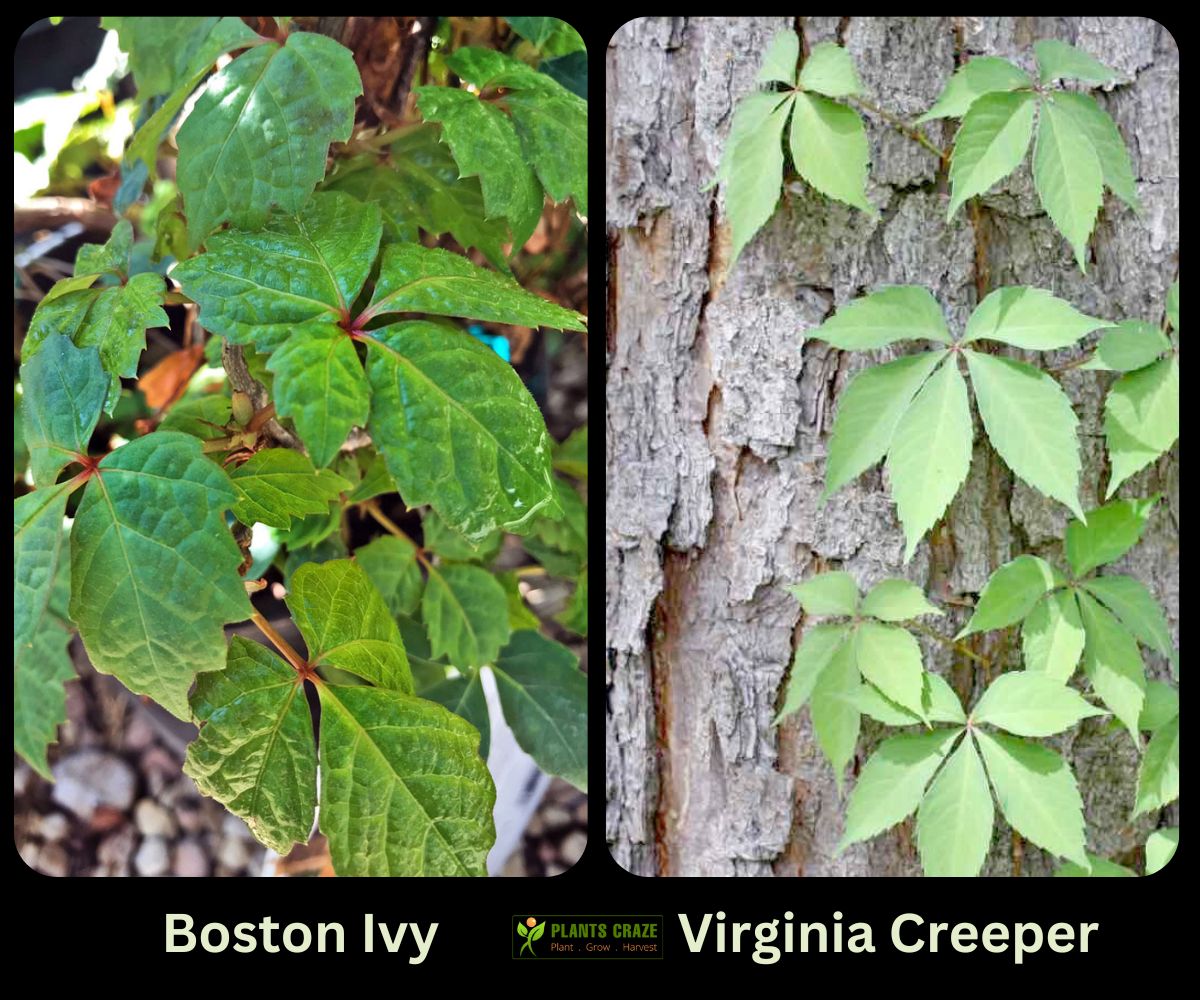Both Boston Ivy and Virginia Creeper are popular climbing vines to dress up your outdoor spaces, but you must know one vs another to fit them in different landscapes.
The botanical name of Boston Ivy is Parthenocissus tricuspidata, whereas the botanical name of Virginia Creeper is Parthenocissus quinquefolia.
So, go through this entire article to know the potential difference between two similar-looking plants, Boston Ivy and Virginia Creeper.
Table of Contents Show
Boston Ivy & Virginia Creeper [Similarities]
Both Boston Ivy and Virginia Creeper belong to a similar genus, the Parthenocissus genus. Moreover, both varieties are from the same family, Vitaceae.

Additionally, both varieties are vigorous climbers that can cover the walls or terraces where you grow them. Also, both are deciduous plants that shed their leaves during fall.
- Both have adhesive tendrils and aerial roots, helping them to attach to the surfaces.
- Moreover, both plant varieties have palmately compound leaves with multiple leaflets.
- When the fall arrives, the leaves turn into vibrant colors with a beautiful display of red, orange, or purple.
- Both climbers bear small, dark-colored berries that enhance the aesthetic appeal of your garden.
- You can use both varieties as ornamental plants with lush green and attractive foliage.
- Both varieties are very adaptive and can tolerate different soil types unless it is well draining.
- Due to the small berries, both plants attract wildlife like birds, reptiles, etc.
- Both varieties require minimal maintenance, making the suitable even for a busy schedule.
Boston Ivy Vs Virginia Creeper [Differences]
Both Boston Ivy and Virginia Creeper share different origins. Boston Ivy is a climber native to Eastern Asia, China, and Japan.
In contrast, Virginia Creeper is native to Eastern and Central North America.
1. Appearance
Although both varieties have palmately compound leaves, Boston Ivy has three-lobed leaves, which look just like maple leaves.
Meanwhile, the leaves of Virginia Creeper are just like the five fingers of the hands. The arrangement of the leaves gives a floral vibe.
Additionally, Boston Ivy bears dark blue berries, whereas the berries in Virginia Creepers are dark purple.
2. Growth Pattern
When the Boston Ivy grows, it adheres to the surface by their sticky tendrils. The bushy growth is uniform on the surface where the plant grows.
In contrast, Virginia Creepers have sticky aerial roots instead of tendrils. Also, the growth pattern is not as uniform as Boston Ivy.
3. Fall Color
When the fall appears, the leaves of Boston Ivy change the color from green to vibrant shades of red and crimson.
Meanwhile, the Virginia Creeper exhibits bright red, purple, and burgundy colors when the fall appears.
4. Growing Condition
Boston Ivy can tolerate various growing conditions, but it prefers to grow in full sunlight even though it can tolerate partial shade.
In contrast, the Virginia creeper is more hardy than the Boston Ivy, which can tolerate more shade. It needs full sun with partial shade to grow.
5. Invasiveness
If you are concerned about the spread and want neat and tidy growth in your outdoor space, Boston Ivy can be the perfect choice. This plant has a slow spread.
Meanwhile, Virginia Creeper has a fast spread, and the growth can be a nuisance in some areas. As the plant is invasive, it can outcompete other plants in your garden. It makes it difficult to get rid of Virginia Creeper.
6. Toxicity
Parts of Boston Ivy, including leaves, stems, and berries, are slightly toxic to humans and pets upon consumption. Heavy consumption may cause nausea, vomiting, and diarrhea.
Compared to Boston Ivy, Virginia Creeper is extremely toxic, even in small consumptions. Ingesting the parts, especially berries, can be life-threatening and can even cause death.
From Editorial Team
Boston Ivy Vs Virginia Creeper: What To Choose?
If you live in the hardiness zone 4-8, it’s better to choose Boston Ivy. However, it’s perfect to choose Virginia Creeper if your location is in USDA zone 3-9.
Additionally, Virginia creeper can become invasive and extremely toxic. So, choosing Boston Ivy is a wise decision if you have pets and children. Boston Ivy also does not outcompete other plants like Virginia Creeper.


